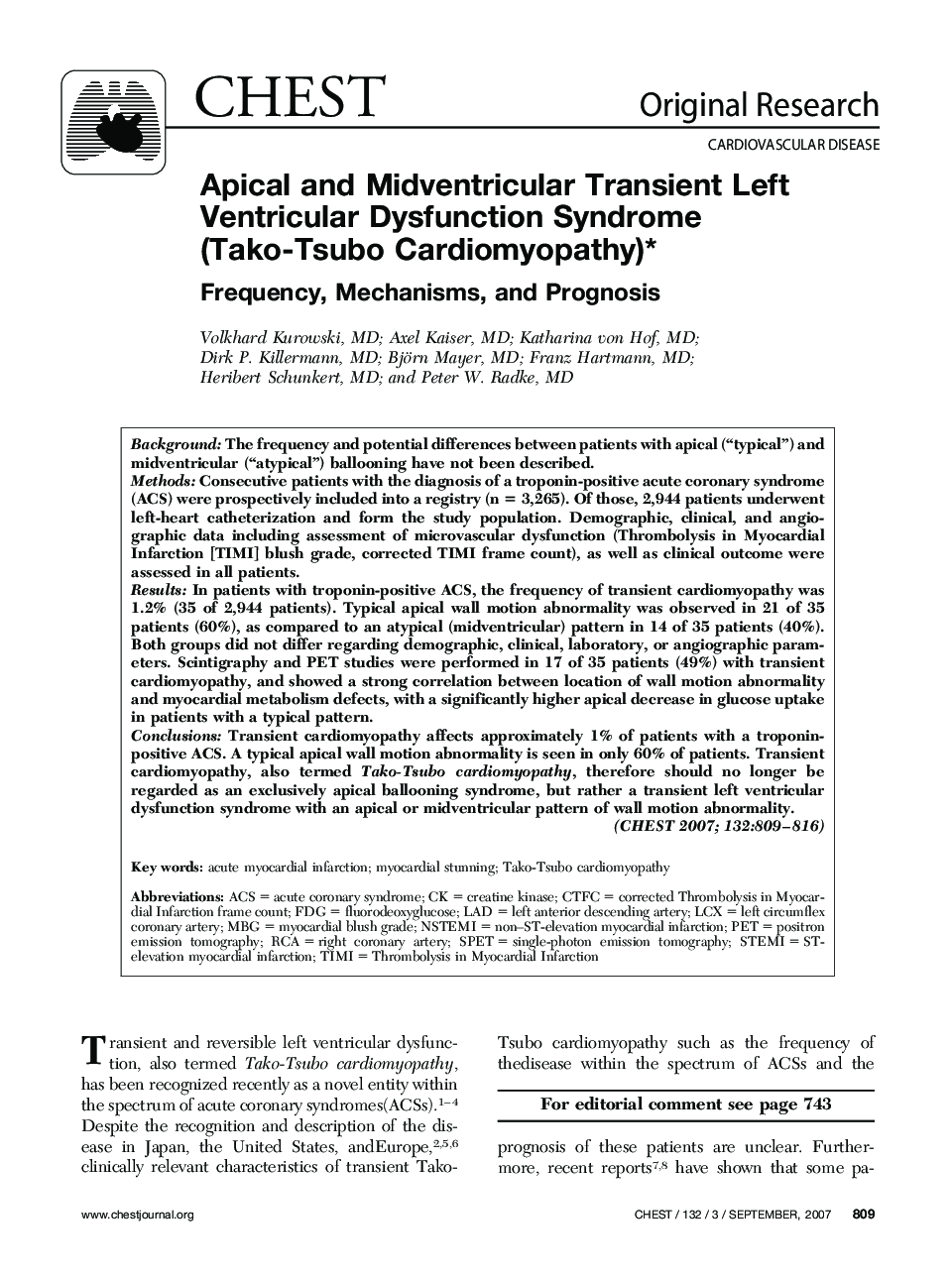| Article ID | Journal | Published Year | Pages | File Type |
|---|---|---|---|---|
| 2905101 | Chest | 2007 | 8 Pages |
BackgroundThe frequency and potential differences between patients with apical (“typical”) and midventricular (“atypical”) ballooning have not been described.MethodsConsecutive patients with the diagnosis of a troponin-positive acute coronary syndrome (ACS) were prospectively included into a registry (n = 3,265). Of those, 2,944 patients underwent left-heart catheterization and form the study population. Demographic, clinical, and angiographic data including assessment of microvascular dysfunction (Thrombolysis in Myocardial Infarction [TIMI] blush grade, corrected TIMI frame count), as well as clinical outcome were assessed in all patients.ResultsIn patients with troponin-positive ACS, the frequency of transient cardiomyopathy was 1.2% (35 of 2,944 patients). Typical apical wall motion abnormality was observed in 21 of 35 patients (60%), as compared to an atypical (midventricular) pattern in 14 of 35 patients (40%). Both groups did not differ regarding demographic, clinical, laboratory, or angiographic parameters. Scintigraphy and PET studies were performed in 17 of 35 patients (49%) with transient cardiomyopathy, and showed a strong correlation between location of wall motion abnormality and myocardial metabolism defects, with a significantly higher apical decrease in glucose uptake in patients with a typical pattern.ConclusionsTransient cardiomyopathy affects approximately 1% of patients with a troponin-positive ACS. A typical apical wall motion abnormality is seen in only 60% of patients. Transient cardiomyopathy, also termed Tako-Tsubo cardiomyopathy, therefore should no longer be regarded as an exclusively apical ballooning syndrome, but rather a transient left ventricular dysfunction syndrome with an apical or midventricular pattern of wall motion abnormality.
